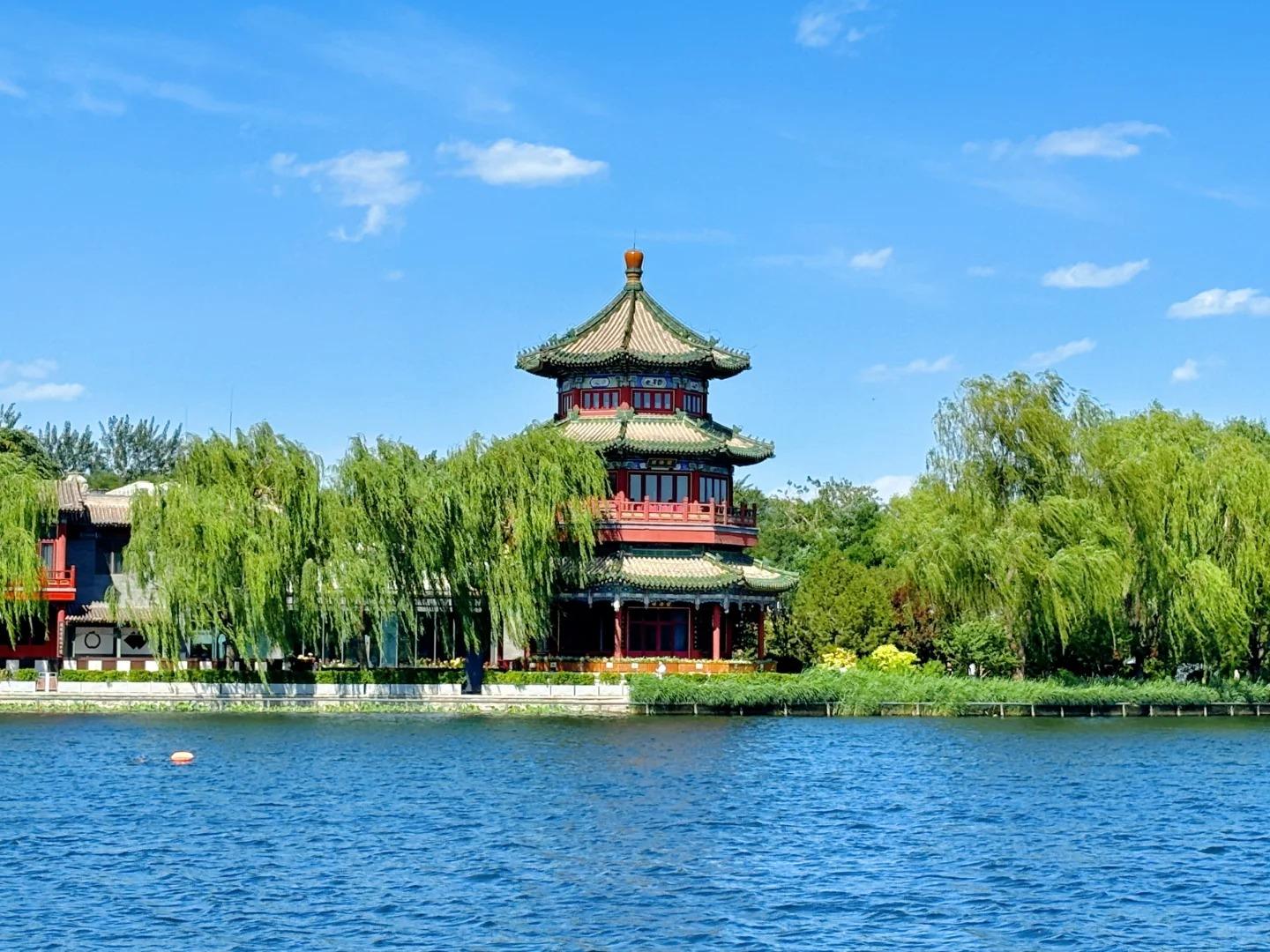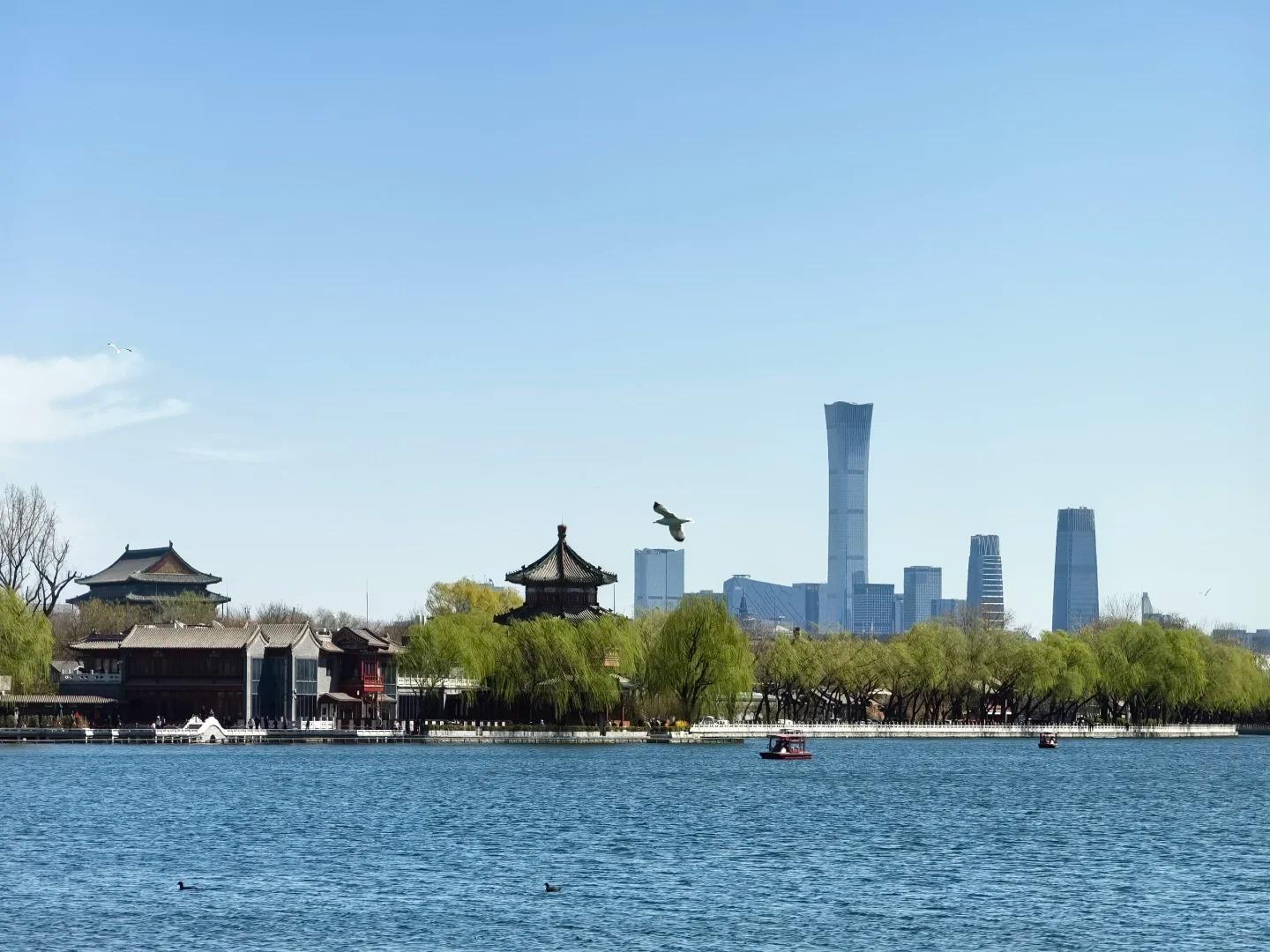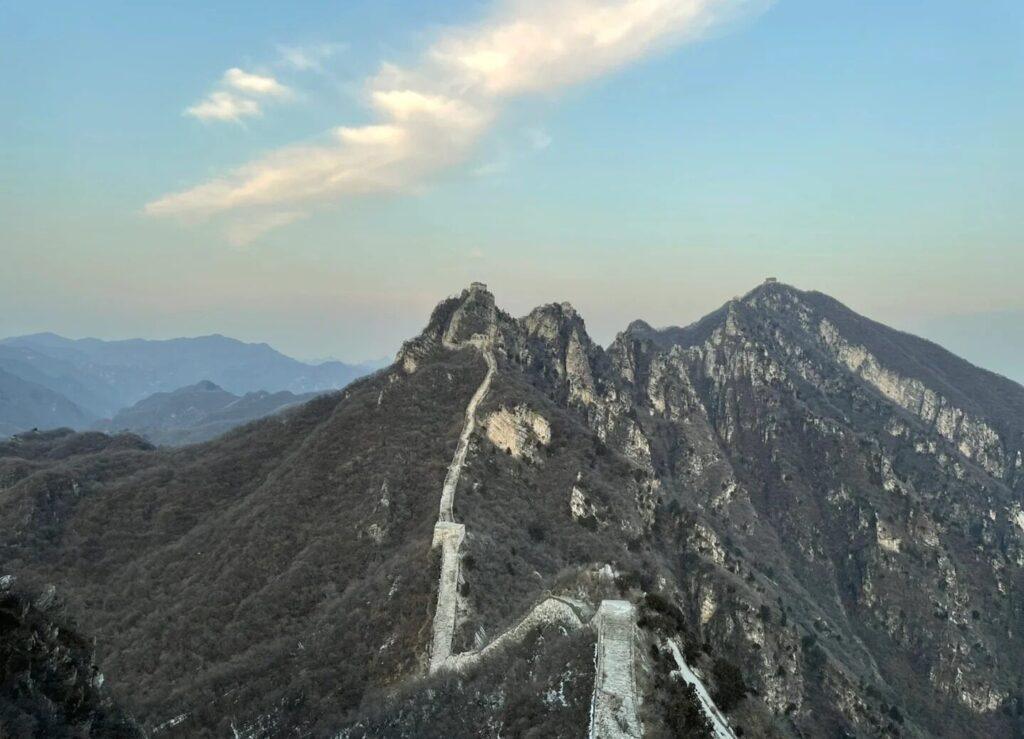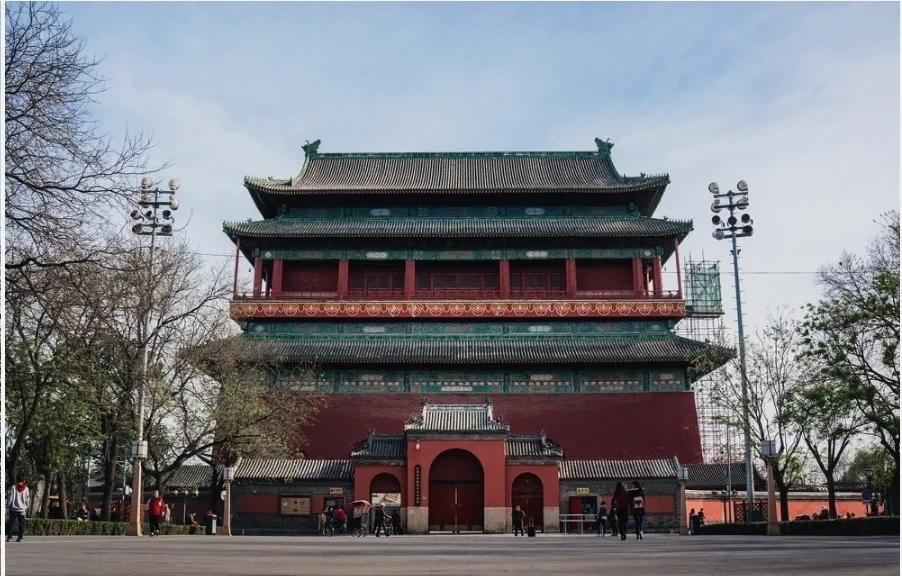Visiting Information
| Information | Details |
|---|---|
| Chinese Name | 什刹海 (Shíchàhǎi) |
| Location and Address | Xicheng District, Beijing, China |
| Opening Hours | Open 24 hours (individual attractions may have specific hours) |
| Entrance Fee | Free to enter the area (some individual attractions may charge fees) |
| How to Get There | By Metro: Line 6 or Line 8 to Shichahai Station By Bus: Take bus 5, 60, 107, or 204 to Drum Tower stop By Taxi: Tell the driver “Shichahai” or show the Chinese characters 什刹海 |
| Best Time for Visit | Spring and Autumn for pleasant weather; Evening for vibrant nightlife |
| Contact Info | Tel: +86 10 6404 4089 (Shichahai Management Office) |
Overview
Shichahai is a historic scenic area in Beijing, consisting of three lakes: Qianhai (Front Sea), Houhai (Back Sea), and Xihai (West Sea). Known for its picturesque landscapes, traditional hutongs, and vibrant nightlife, Shichahai is a popular destination for both locals and tourists. The area combines natural beauty with historical architecture, offering a unique glimpse into Beijing’s past and present.
Historical Background
Shichahai’s history dates back over 800 years to the Jin Dynasty. Originally part of the imperial city’s moat system, it later became an important commercial hub during the Ming and Qing dynasties. The area has witnessed significant historical events and has been home to many notable figures in Chinese history. Today, Shichahai stands as a testament to Beijing’s rich cultural heritage, blending ancient traditions with modern urban life.
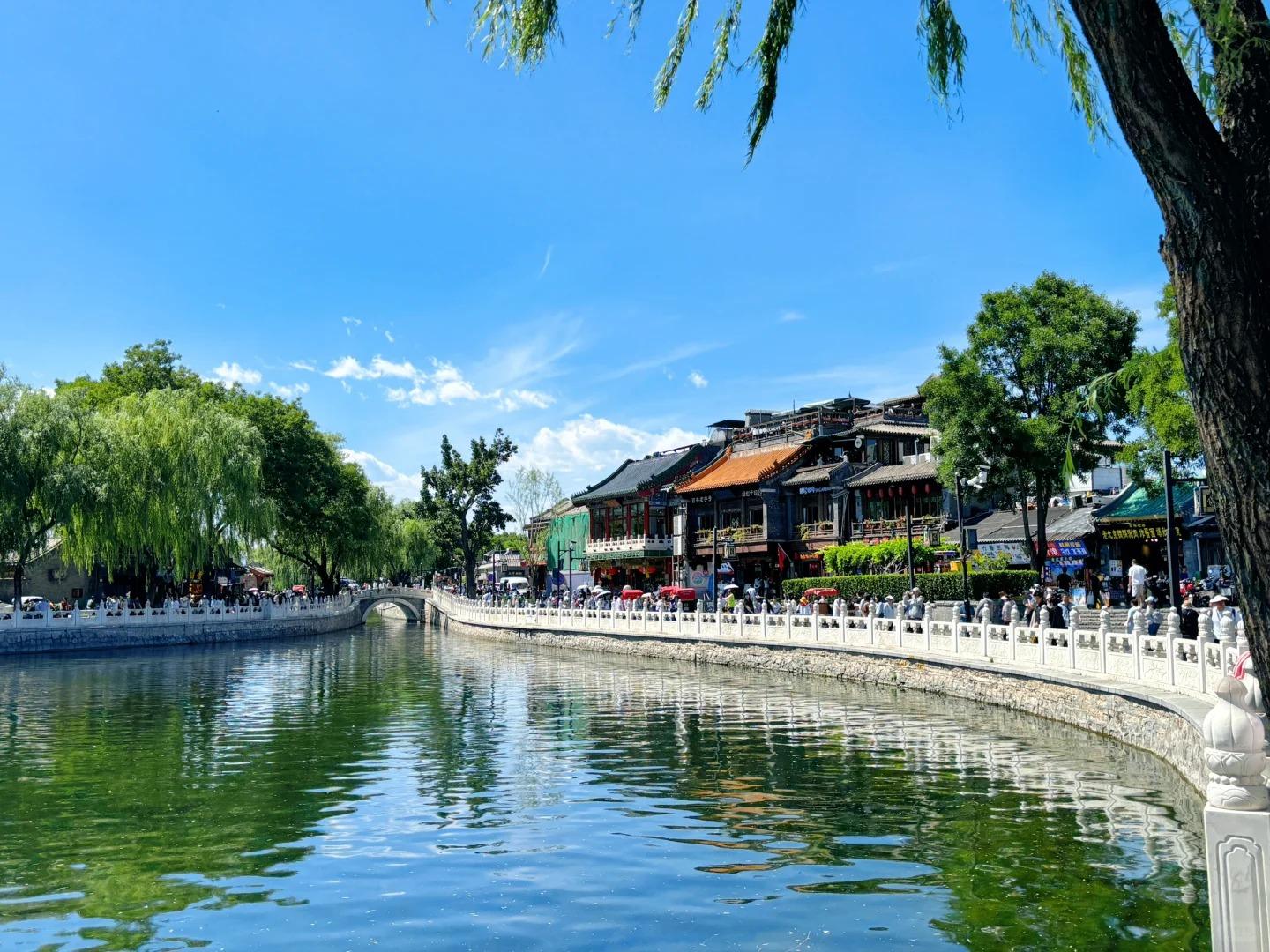
Architectural Features
- Traditional Hutongs: Shichahai is famous for its well-preserved hutongs, narrow alleyways lined with traditional courtyard houses. These hutongs offer a glimpse into the old Beijing lifestyle and architecture, with some dating back to the Yuan, Ming, and Qing dynasties.
- Historic Mansions and Residences: The area boasts several historic mansions and former residences of notable figures, such as the Guo Moruo Memorial Museum and the Former Residence of Soong Ching-ling. These buildings showcase traditional Chinese architectural styles and provide insights into the lives of important historical figures.
- Distinctive Lakeside Architecture: The shorelines of the three lakes feature a mix of traditional and modern architecture. Historic buildings like the Silver Ingot Bridge coexist with contemporary bars and restaurants, creating a unique architectural landscape that reflects Beijing’s evolution.
- Religious Structures: Shichahai is home to several religious sites, including the Guanghua Temple and the Fire God Temple. These structures exemplify traditional Chinese religious architecture and serve as important cultural landmarks in the area.
Cultural Importance
Shichahai holds significant cultural importance as a living museum of Beijing’s history and traditions. It represents the intersection of imperial, religious, and folk cultures, offering visitors a comprehensive view of Beijing’s cultural evolution. The area’s preservation of traditional architecture, customs, and way of life makes it an invaluable resource for understanding and experiencing authentic Beijing culture.
Surrounding Attractions
- Drum and Bell Towers: Located at the northern end of the Shichahai area, these ancient towers once served as the city’s timekeeping center. Visitors can climb the towers for panoramic views of Beijing and experience traditional drum and bell performances.
- Prince Gong’s Mansion: This expansive compound is one of the best-preserved princely residences in Beijing. It features exquisite gardens, traditional architecture, and exhibits on Qing dynasty court life, offering a glimpse into the lives of Chinese nobility.
- Yandai Xiejie (Tobacco Pipe Street): This quaint alley near Shichahai is known for its traditional shops selling crafts, antiques, and souvenirs. It’s a great place to experience local commerce and pick up unique mementos.
- Beihai Park: Adjacent to Shichahai, Beihai Park is one of the oldest and most complete imperial gardens in China. It features a large lake, historic pavilions, and the iconic White Dagoba, making it a perfect complement to a visit to Shichahai.

Photography Opportunities
- Lakeside Scenery: The three lakes of Shichahai offer stunning views, especially during sunrise and sunset. The reflection of traditional architecture on the water’s surface creates picturesque scenes perfect for landscape photography.
- Hutong Life: The narrow hutongs provide excellent opportunities for street photography, capturing the essence of traditional Beijing life. The interplay of light and shadow in these alleyways can create dramatic and atmospheric shots.
- Historical Architecture: From ancient temples to preserved mansions, Shichahai’s diverse architectural styles offer rich subjects for architectural photography. The intricate details of traditional Chinese buildings provide endless possibilities for close-up and wide-angle shots.
- Nighttime Illuminations: As night falls, Shichahai transforms with colorful lights and bustling activity. The illuminated buildings reflecting on the lake and the vibrant bar street create excellent opportunities for night photography and capturing the area’s lively atmosphere.
Modern Importance
- Cultural Preservation: Shichahai plays a crucial role in preserving Beijing’s cultural heritage, serving as a living museum of traditional architecture, customs, and way of life. It stands as a reminder of the city’s rich history amidst rapid modernization.
- Tourism Hub: As one of Beijing’s most popular tourist destinations, Shichahai significantly contributes to the city’s tourism industry. It attracts both domestic and international visitors, boosting the local economy and promoting cultural exchange.
- Urban Recreation: For Beijing residents, Shichahai serves as an important recreational area, offering a space for leisure activities, exercise, and social gatherings. It provides a much-needed green space and water feature in the heart of the bustling city.
- Cultural Education: The area serves as an outdoor classroom for learning about Beijing’s history and traditional culture. Schools and educational institutions often organize field trips to Shichahai, making it an important resource for cultural education.

FAQ
- What is Shichahai famous for?
Shichahai is famous for its scenic lakes, historic hutongs, traditional architecture, and vibrant nightlife. It’s known as a place where old Beijing charm meets modern urban life. - What’s inside Shichahai?
Shichahai contains three lakes (Qianhai, Houhai, and Xihai), numerous hutongs, historic residences, temples, bars, restaurants, and various cultural attractions. It’s a blend of natural scenery, historical sites, and modern entertainment venues. - Is Shichahai free?
Yes, entry to the Shichahai area is free. However, some specific attractions within the area may charge admission fees. - Is Shichahai worth visiting?
Absolutely. Shichahai offers a unique blend of natural beauty, historical significance, and modern entertainment. It’s an excellent place to experience both traditional and contemporary Beijing culture. - What to do in Shichahai?
In Shichahai, you can take a boat ride on the lakes, explore ancient hutongs, visit historical sites, enjoy bar-hopping in the evening, try local cuisine, shop for souvenirs, and simply soak in the atmosphere of old Beijing. - How do I get to Shichahai in the local city?
In Beijing, you can reach Shichahai by taking Metro Line 6 or 8 to Shichahai Station. Alternatively, you can take buses 5, 60, 107, or 204 to the Drum Tower stop, which is near Shichahai. - How to visit Shichahai?
To visit Shichahai, plan to spend at least half a day exploring the area. Start with a walk around the lakes, then explore the hutongs. Consider taking a guided tour to learn about the area’s history. In the evening, enjoy the nightlife around Houhai Lake. Wear comfortable walking shoes and be prepared for crowds, especially on weekends and holidays.


